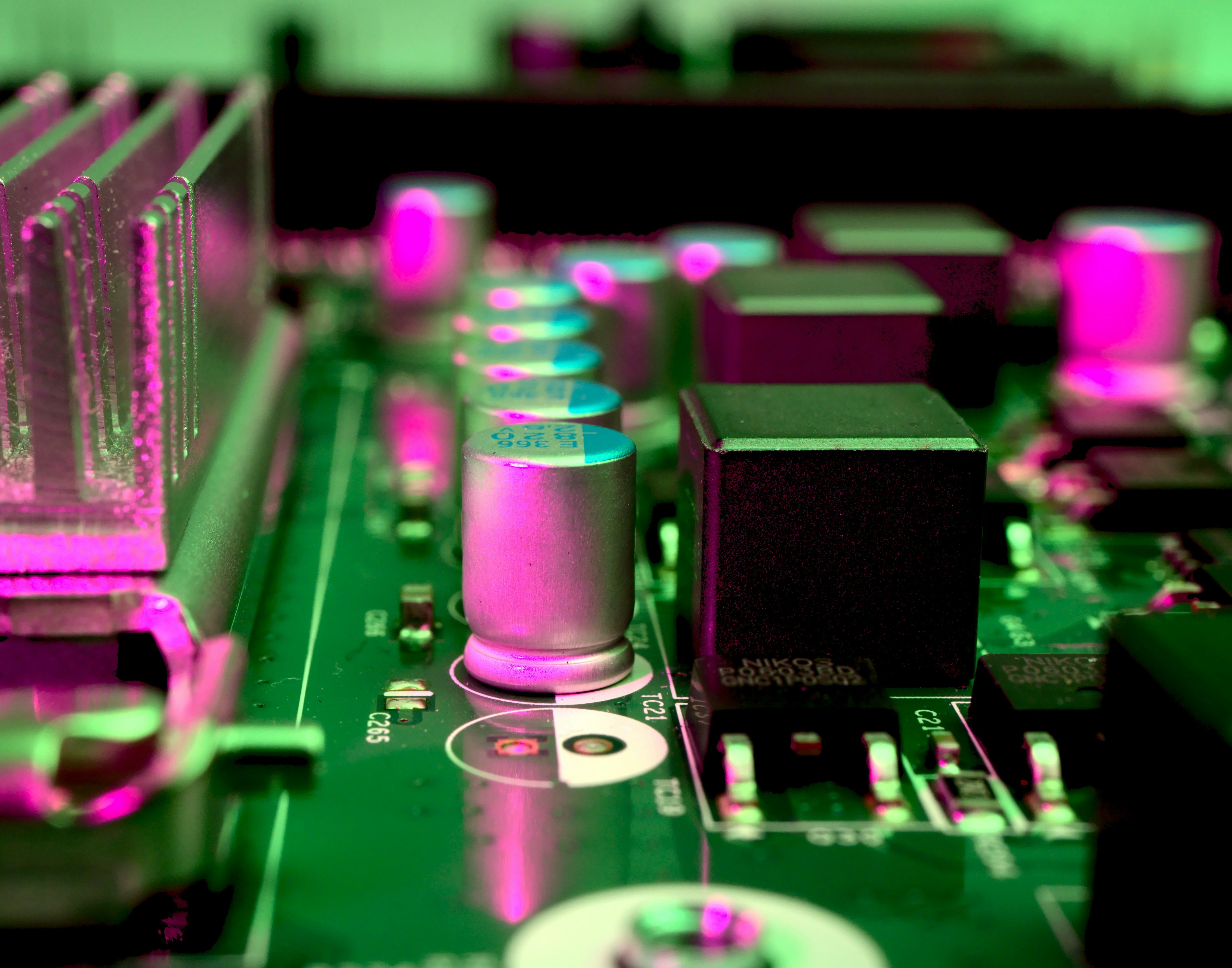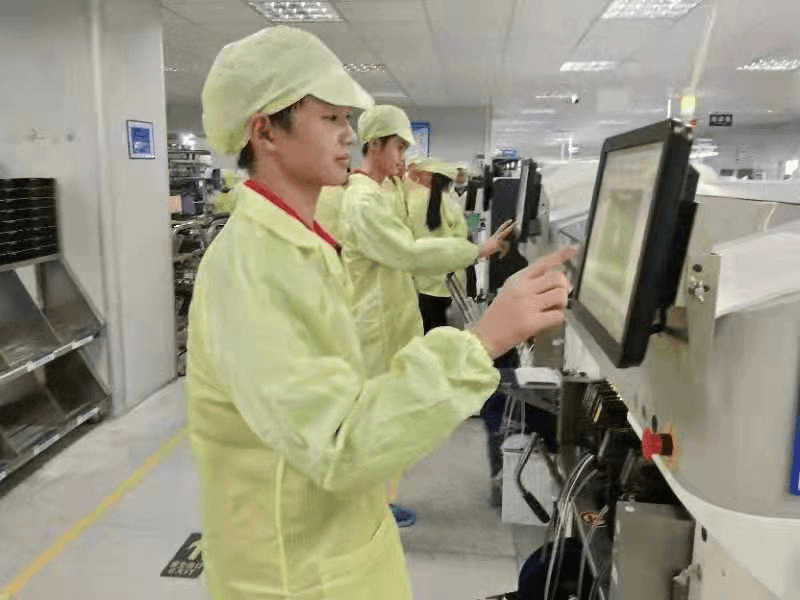Introduction

In the fast-paced world of electronics, the significance of a flawless PCB cannot be overstated. Whether you’re creating a simple circuit or a complex electronic device, understanding what is the assembly of PCB is crucial for ensuring functionality and reliability. A well-executed printed circuit board assembly (PCBA) process not only enhances performance but also minimizes costly errors that can arise from poor design choices or manufacturing oversights.
Importance of a Flawless PCB
A flawless PCB serves as the backbone of any electronic device, providing both structural support and electrical connectivity. It’s vital to recognize that even minor flaws in your PCB can lead to significant performance issues or product failures down the line. Therefore, knowing how to assemble a PCB board correctly is essential for achieving optimal results in any project.
Key Aspects of PCB Board Assembly
When diving into printed circuit board assembly, several key aspects must be considered to ensure success. From understanding the differences between PCB and PCB assembly to grasping what is the assembly layer in PCB design, every detail matters. Familiarity with these components will not only streamline your production process but also enhance overall product quality.
Common Pitfalls to Avoid
Navigating the complexities of printed circuit board assembly companies can be daunting, especially if you're unaware of common pitfalls that could derail your project. Neglecting crucial steps in the printed circuit board assembly process may result in delays and increased costs, so it’s essential to stay vigilant. By being aware of these potential missteps and actively working to avoid them, you can set yourself up for success in your next project.
Design Validation

Design validation is a critical step in ensuring the success of your PCB board assembly. It involves a thorough review and confirmation of various design elements that can significantly impact the final product's performance and reliability. By taking the time to validate your design, you can avoid costly mistakes and delays in the assembly process.
Double-Check Your Schematics
When embarking on your PCB board assembly journey, one of the first tasks is to double-check your schematics. This step is crucial because schematics serve as the blueprint for what will be assembled later on. Errors in this stage can lead to significant issues down the line, such as malfunctioning circuits or improper connections, which could derail your project entirely.
To effectively double-check your schematics, ensure that all components are correctly represented and connected according to their intended functions. Utilize software tools designed for schematic capture that can highlight potential errors or inconsistencies. Remember, taking this extra time now can save you headaches during the Printed Circuit Boards Assembly (PCBA) process.
Ensure Layout Accuracy
Next up is ensuring layout accuracy, which plays a pivotal role in how to assemble a PCB board efficiently. The layout dictates how components will physically fit on the board and interact with each other electrically. A well-organized layout not only facilitates easier assembly but also enhances performance by minimizing interference and signal loss.
To verify layout accuracy, consider using advanced design software that allows you to visualize component placement before fabrication begins. Pay attention to routing paths; they should be clear and unobstructed for optimal signal integrity during operation. If there are discrepancies between your schematic and layout, it’s essential to address them immediately before moving forward with manufacturing.
Confirm Component Specifications
Finally, confirming component specifications is vital for successful PCB board assembly outcomes. Each component needs to meet its specified electrical characteristics—such as voltage ratings and tolerances—to function correctly within the circuit design. If any part doesn’t meet these specifications, it could result in failure during testing or even damage during operation.
Make sure you cross-reference each component against its datasheet for accurate details regarding size, pin configuration, and electrical properties—these are crucial when discussing What is the assembly of PCB? In addition, understanding What is the difference between PCB and PCB assembly? helps clarify why precise specifications matter: while PCBs refer solely to the printed circuit boards themselves, PCBA encompasses both boards and their assembled components working together harmoniously.
Manufacturing Specifications

When it comes to the manufacturing specifications of your printed circuit boards assembly (PCBA) process, clarity is key. This stage involves a deep dive into the nitty-gritty details that will ensure your PCB board assembly meets all necessary requirements and standards. Understanding these specifications can significantly impact the efficiency and success of how to assemble a PCB board.
Clarify PCB Fabrication Requirements
Before you embark on your journey into PCB board assembly, it's crucial to clarify your fabrication requirements. This includes determining the type of materials needed, such as substrate choices and copper thickness, which can affect both performance and cost. Failing to specify these details upfront can lead to misunderstandings with printed circuit board assembly companies, ultimately delaying your project timeline.
In addition to material selection, consider the dimensions and tolerances of your design—this is where precision becomes paramount. Each component must fit perfectly within its designated space; otherwise, you risk complications during the assembly process. So ask yourself: What is the assembly layer in PCB? Understanding each layer's role in this intricate puzzle will help ensure that every part aligns seamlessly.
Understand PCB Assembly Techniques
Now that you've got your fabrication requirements sorted out, it’s time to explore various techniques involved in the printed circuit board assembly process. Different methods like surface mount technology (SMT) or through-hole technology have unique advantages depending on factors like component size and application type. Knowing what is the assembly of PCB? helps you choose wisely between these techniques for optimal results.
Additionally, consider how automated processes can streamline production while reducing human error—an essential factor when asking how to assemble a PCB board efficiently. Automation not only speeds up production but also enhances repeatability and consistency across multiple assemblies. Remember that selecting an appropriate technique directly influences both quality and cost-effectiveness in your PCBA process.
Review Assembly Layer Considerations
The final step in ensuring successful manufacturing specifications is reviewing assembly layer considerations for your printed circuit boards assembly (PCBA). Each layer serves a specific purpose; understanding their functions can help identify potential issues before they arise during production or testing phases. For instance, recognizing which components are placed on which layers will facilitate better communication with manufacturers about what you need.
Moreover, it's essential to consider how many layers are necessary for optimal performance without overcomplicating the design unnecessarily—more layers mean more complexity! Balancing functionality with simplicity ensures that you don’t fall into common pitfalls associated with excessive layering in PCBs while still achieving desired outcomes for your projects. So keep this checklist handy as you navigate through this intricate landscape.
Quality Assurance

Ensuring quality in PCB board assembly is crucial for the success of any electronic project. Quality assurance involves a series of tests and evaluations that confirm each component functions correctly and adheres to specifications. By implementing rigorous quality assurance protocols, you can avoid costly mistakes down the line.
Implement Testing Protocols
Testing protocols are essential in the printed circuit board assembly (PCBA) process to verify that everything works as intended before final deployment. Start with visual inspections, where you check for soldering defects, misaligned components, or any obvious issues with the PCB layout. Following this, utilize functional testing methods to ensure that all electronic components perform their designated functions under various conditions.
Moreover, automated testing equipment can help streamline this process by allowing for more thorough examinations without human error. This step is vital because it answers the question: what is the assembly of PCB? It ensures not only that your design meets specifications but also that your end product will be reliable in real-world applications.
Select Reliable Printed Circuit Board Assembly Companies
Choosing the right printed circuit board assembly companies can make or break your project’s success. Look for companies with proven track records and positive customer reviews; their experience will be invaluable in navigating potential pitfalls during PCB board assembly. Ensure they understand critical aspects such as what is the difference between PCB and PCB assembly? This knowledge guarantees they’ll handle both fabrication and assembly processes seamlessly.
In addition to experience, consider their capabilities regarding different assembly layers in PCB production and whether they offer specialized services like surface mount technology (SMT) or through-hole technology (THT). These factors influence not only efficiency but also how well your product will perform once assembled.
Evaluate Process Quality Before Sending
Before sending off your designs for production, conduct a thorough evaluation of process quality to prevent any unforeseen issues during the printed circuit board assembly process. Review all documentation related to manufacturing specifications and ensure compliance with industry standards; this includes double-checking component specifications against what was initially intended.
Additionally, communicate clearly with your selected manufacturer about any unique requirements specific to your design—this could involve discussing how to assemble a PCB board effectively or addressing concerns about potential bottlenecks in production timelines. Taking these proactive steps will help ensure a smooth transition from design to finished product while minimizing rework and delays.
Conclusion

In the world of electronics, a flawless PCB board assembly is paramount to ensure functionality and reliability. As we wrap up our discussion, it's essential to revisit the key points that can elevate your project from mediocre to magnificent. By adhering to a thorough checklist and collaborating with trusted partners like Bensun Technology, you can streamline your Printed Circuit Boards Assembly (PCBA) process for optimal results.
Final Checklist for PCB Preparation
Before diving into the assembly of PCB, having a final checklist is crucial. Start by confirming that all design specifications are met, including component placements and soldering requirements. Next, ensure that your manufacturing specifications align with industry standards to avoid any hiccups during the printed circuit board assembly process.
Don’t forget to double-check your schematics and layout accuracy; these are often the culprits behind assembly mishaps. Additionally, verifying component specifications will help prevent compatibility issues down the line. With this checklist in hand, you’ll be well-equipped for a successful PCB board assembly.
Steps to Enhance Assembly Success
To enhance your chances of success in how to assemble a PCB board effectively, consider adopting best practices throughout each phase of production. First and foremost, invest time in thorough design validation; this step is critical as it sets the foundation for everything else in the printed circuit board assembly process.
Next, familiarize yourself with various PCB assembly techniques—whether through surface mount technology or through-hole methods—to determine which aligns best with your project needs. Understanding what is the difference between PCB and PCB assembly will also help clarify which processes are necessary at each stage.
Finally, implement rigorous quality assurance protocols during every step of production; testing protocols can catch errors before they escalate into costly mistakes during manufacturing or after deployment.
Working with Bensun Technology for Excellence
When it comes to navigating the intricacies of printed circuit board assembly companies, partnering with experts like Bensun Technology can make all the difference. Their commitment to quality ensures that every aspect of your project—from design validation through final testing—is handled meticulously.
Bensun's experienced team understands what is the assembly layer in PCB and how it impacts overall performance; they leverage this knowledge to optimize each layer's functionality within your design framework. By collaborating closely with them throughout your project lifecycle, you'll not only enhance efficiency but also gain insights into improving future projects based on real-time feedback.
In conclusion, investing time in preparation and choosing reliable partners will significantly impact your success rate in PCB board assembly endeavors.
